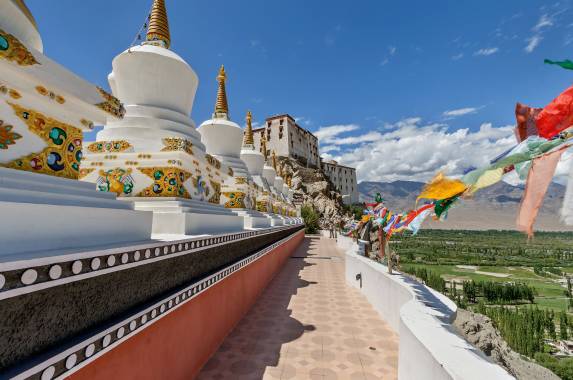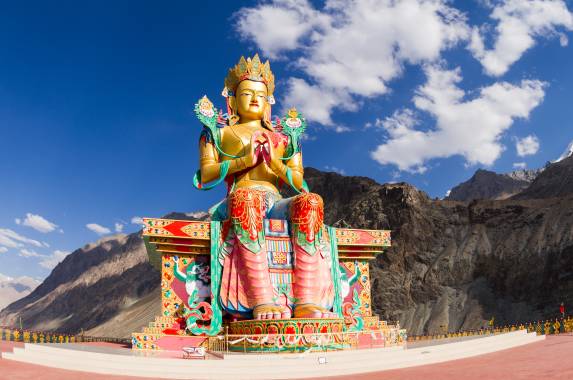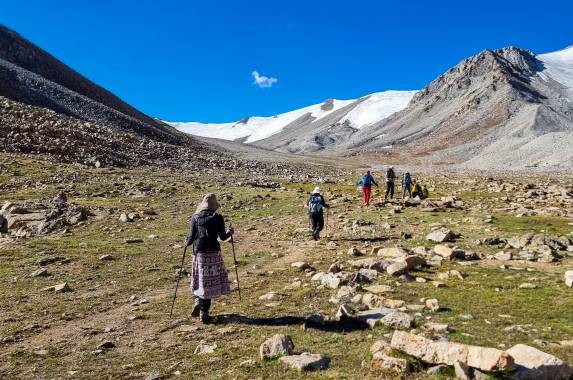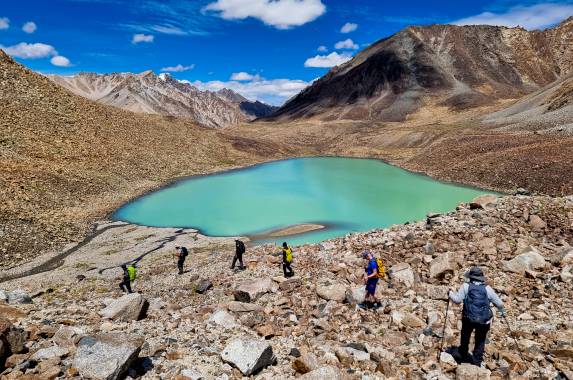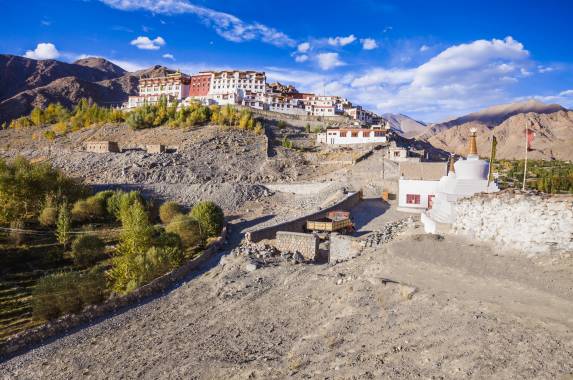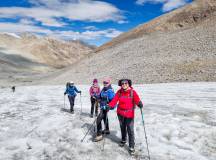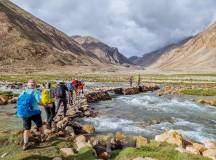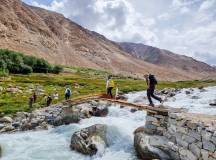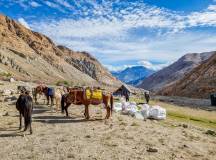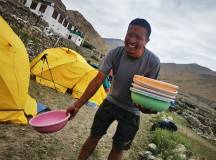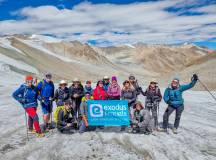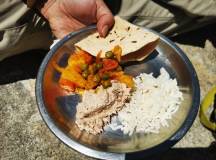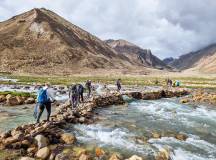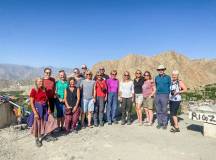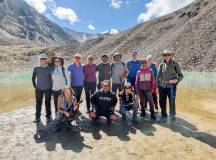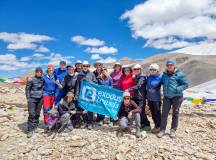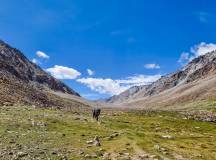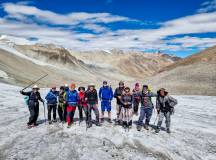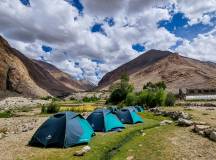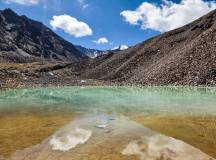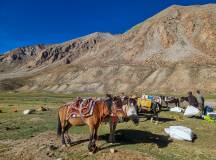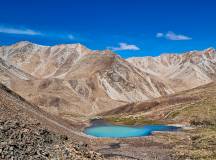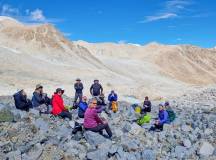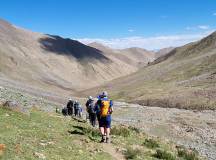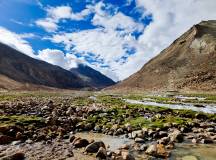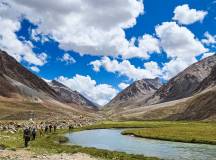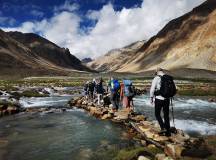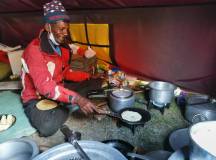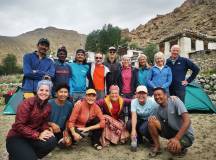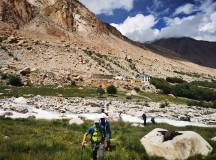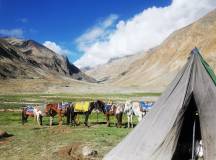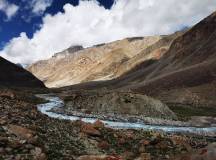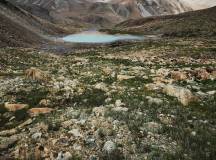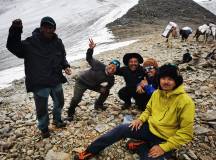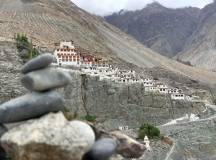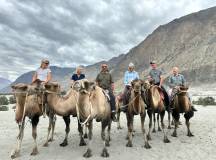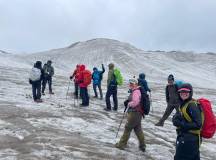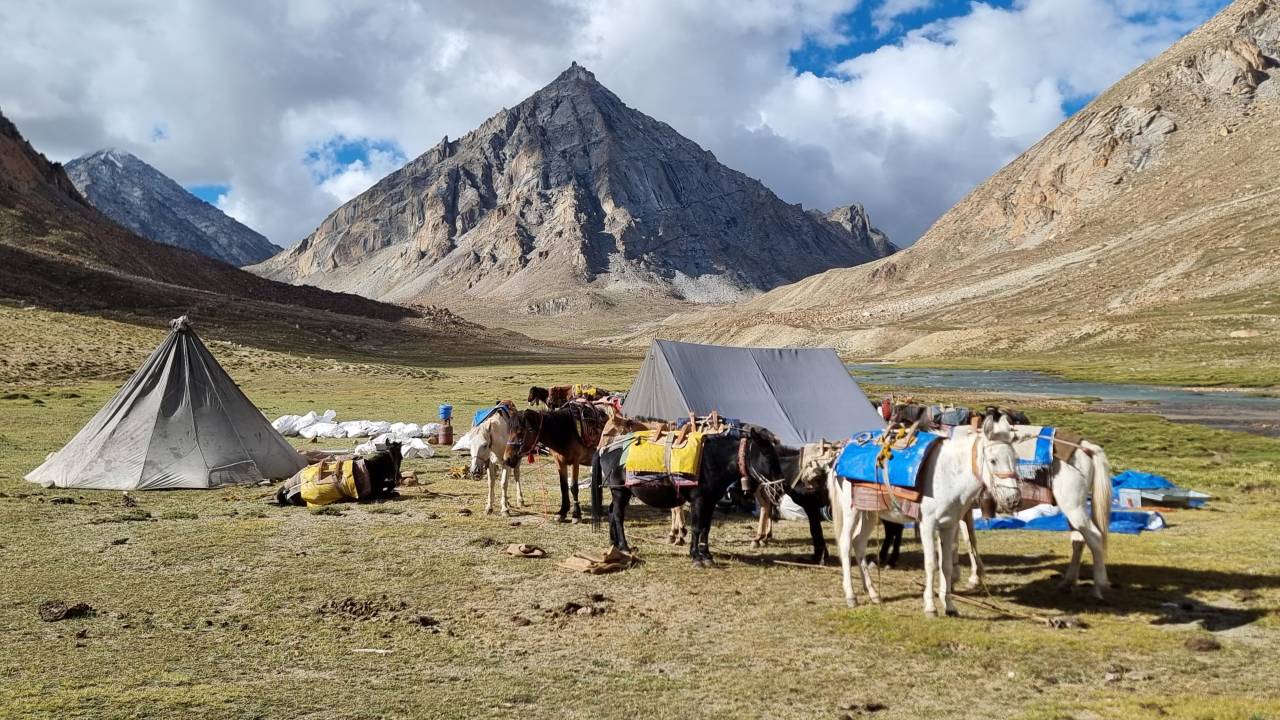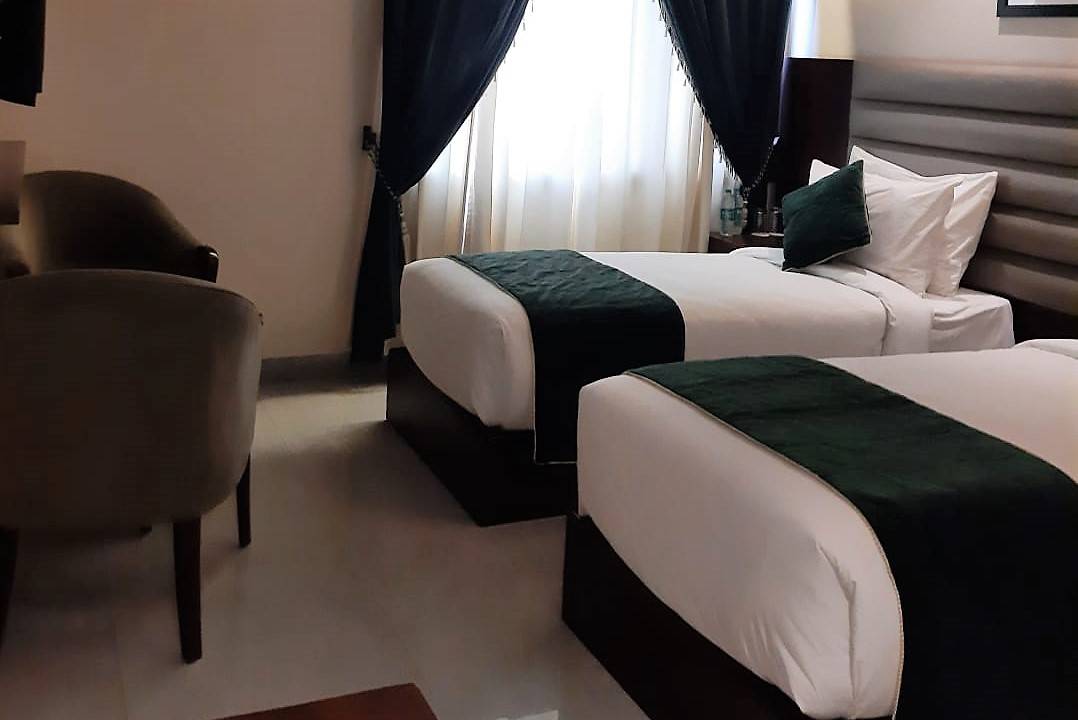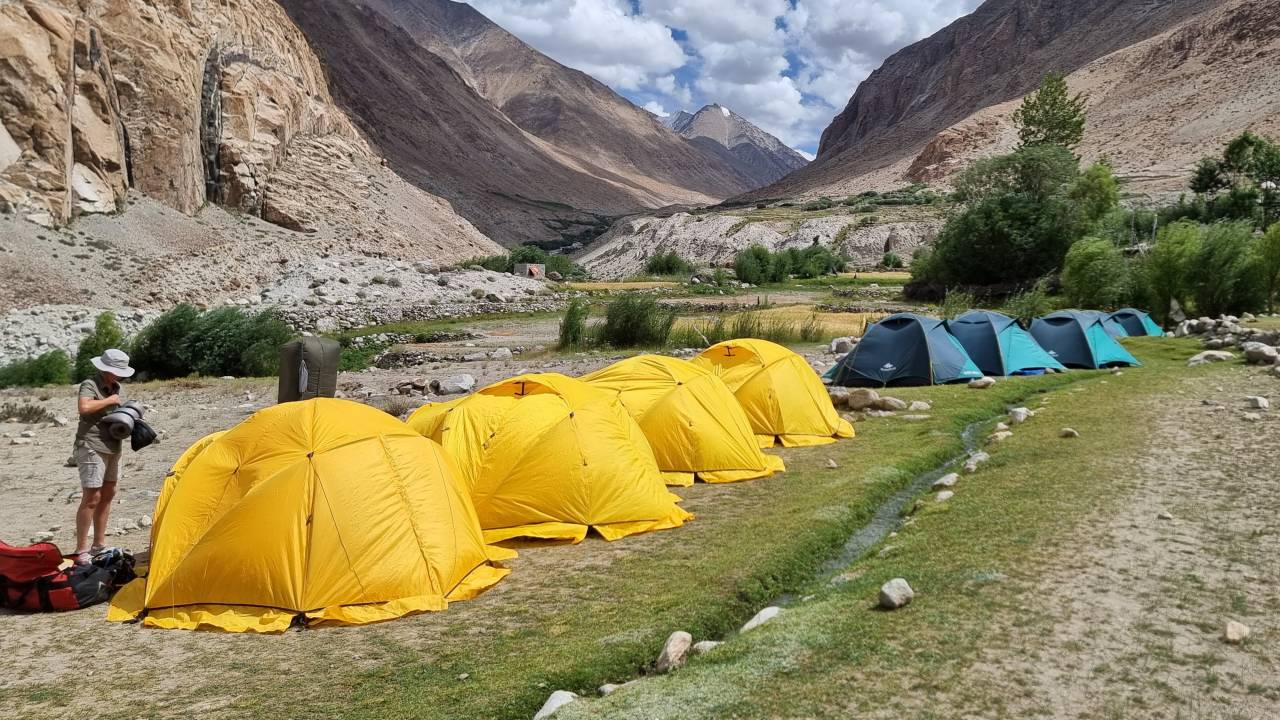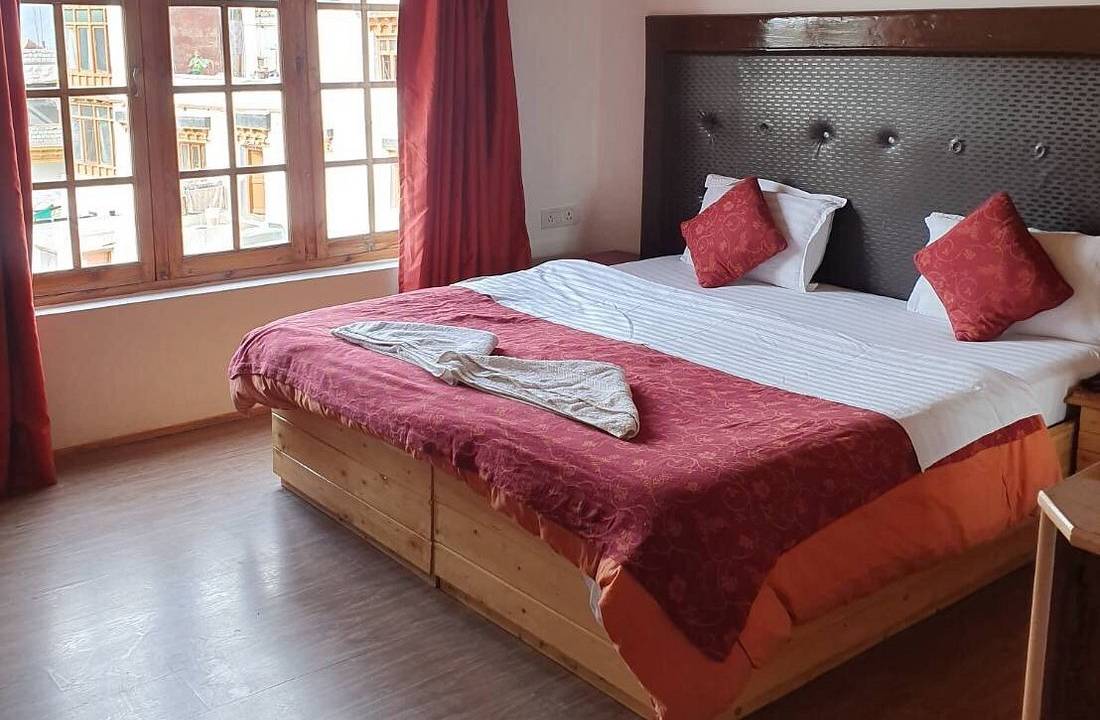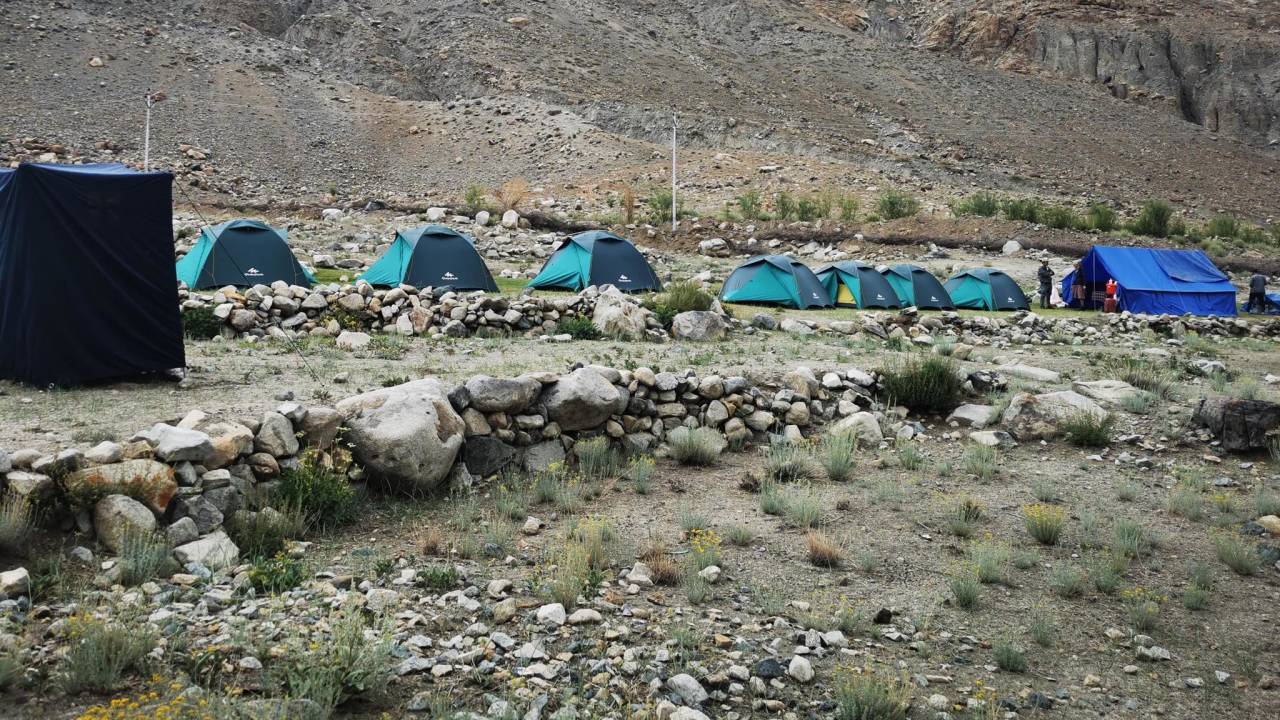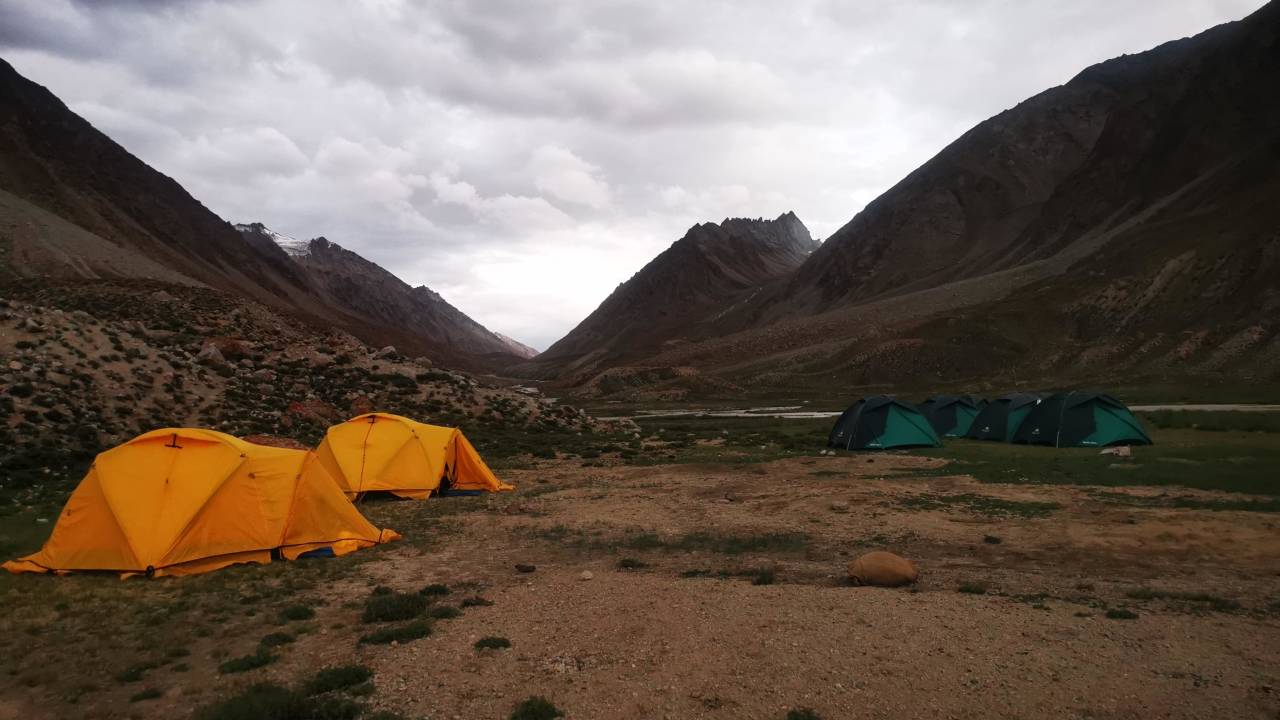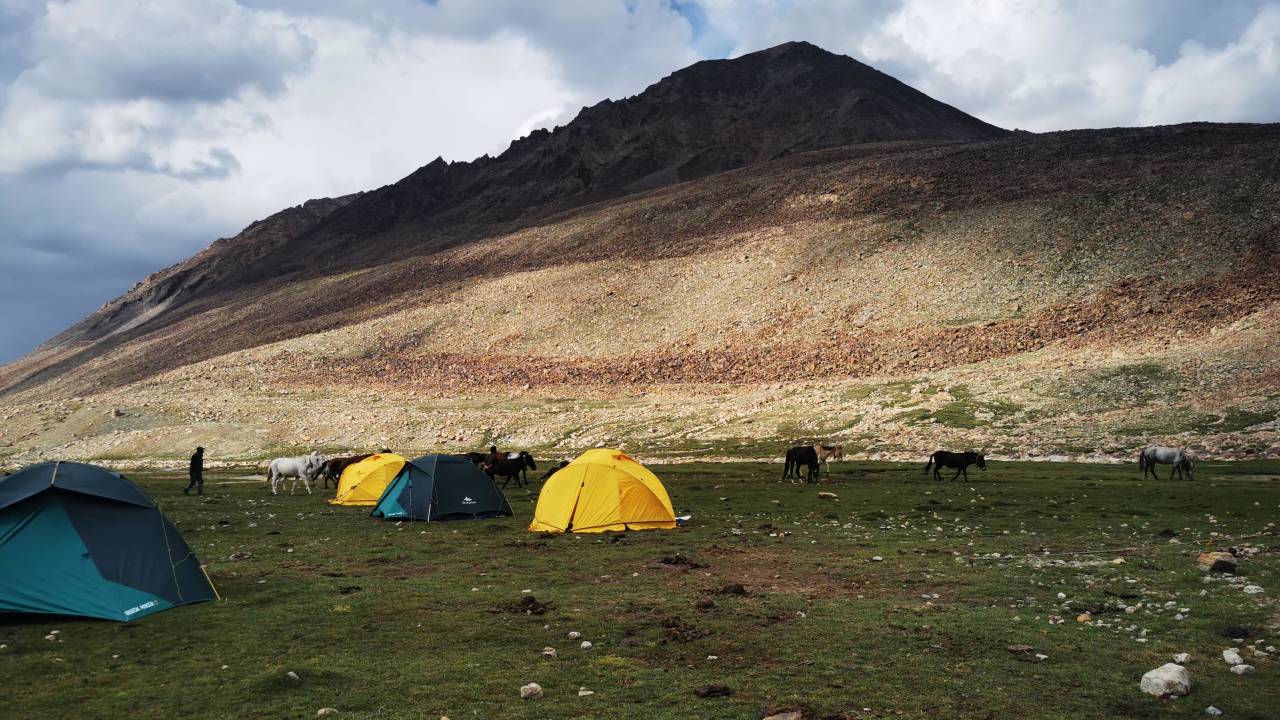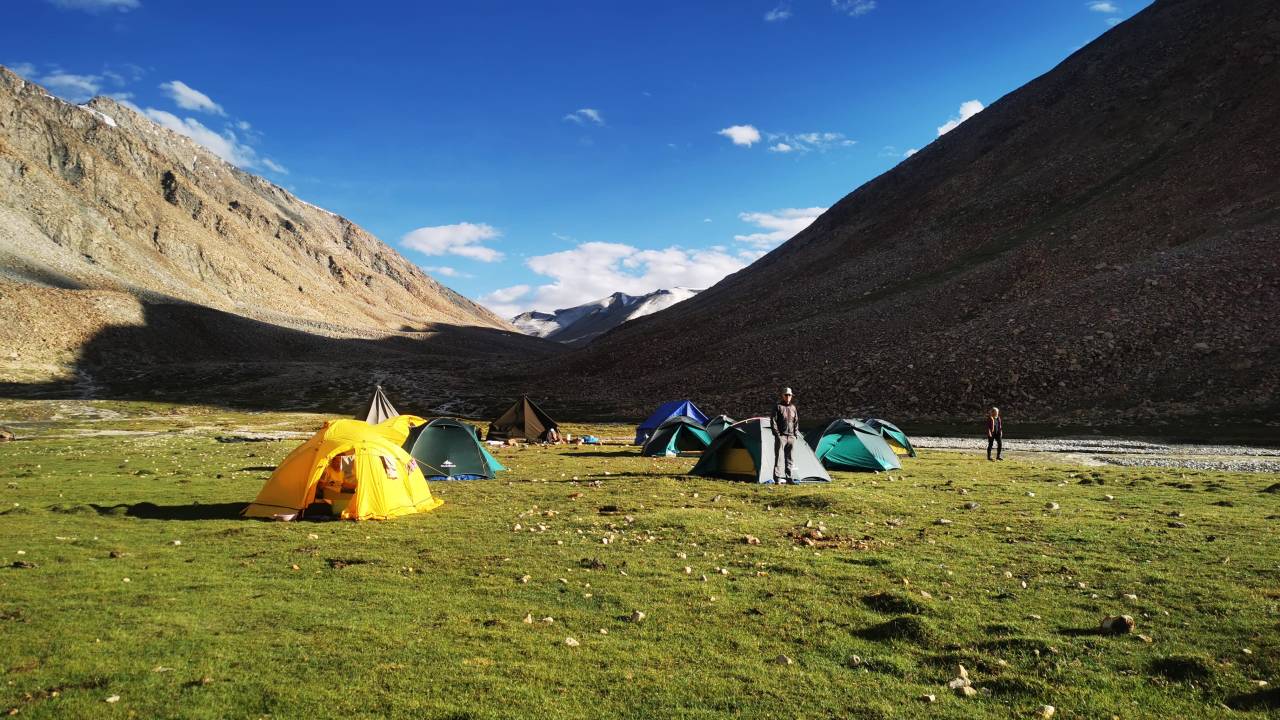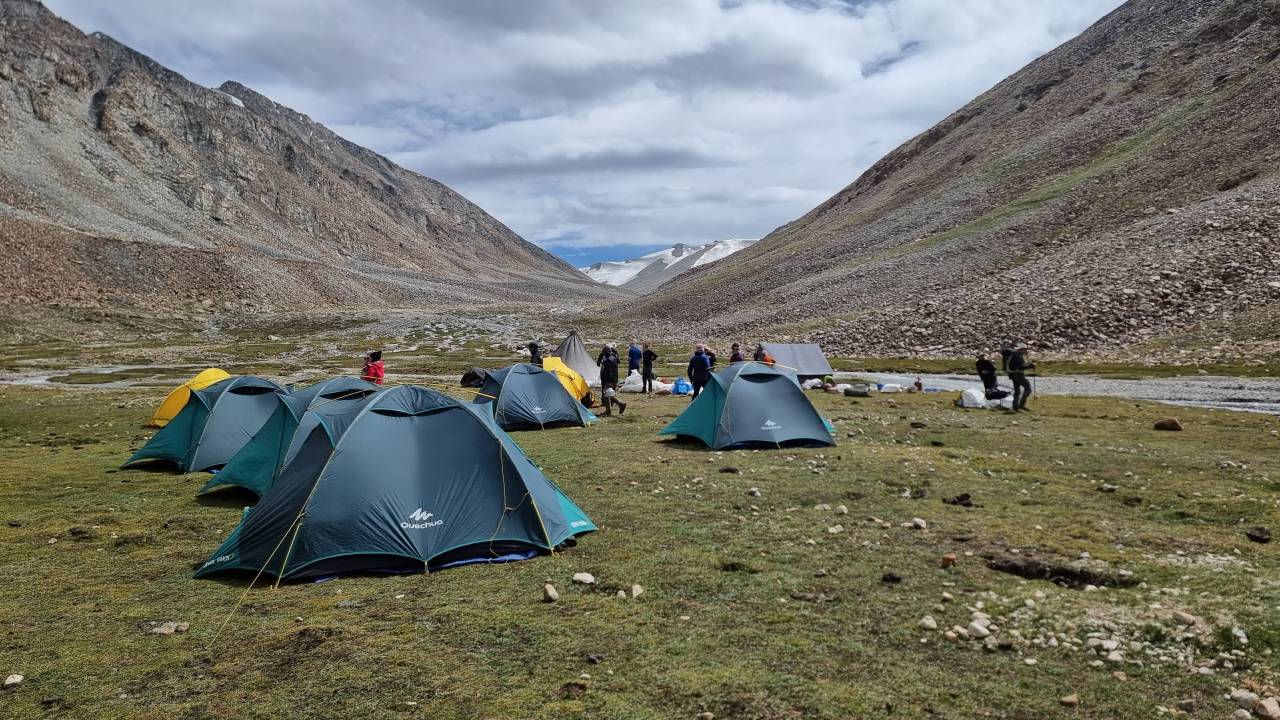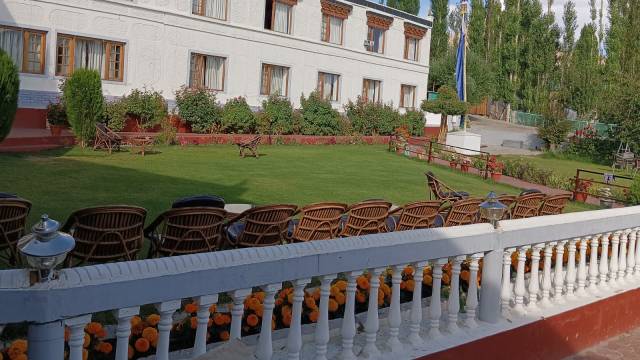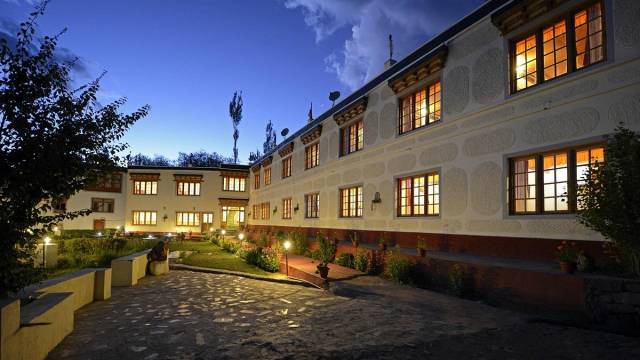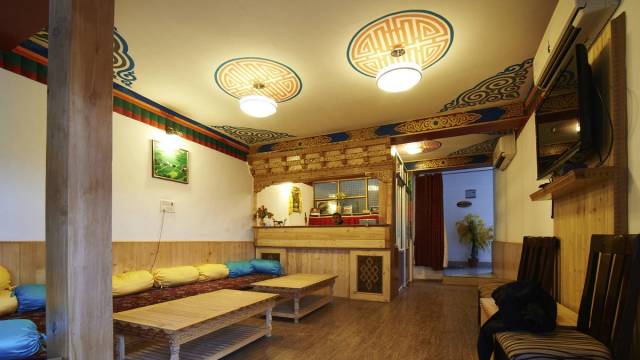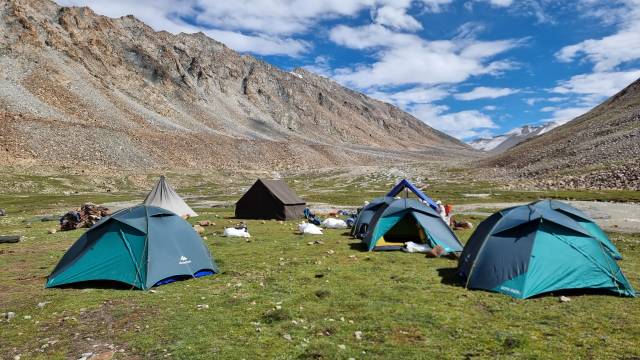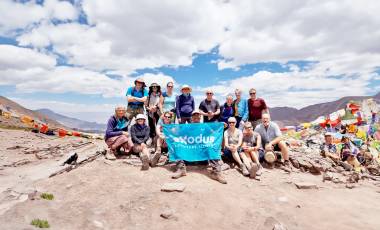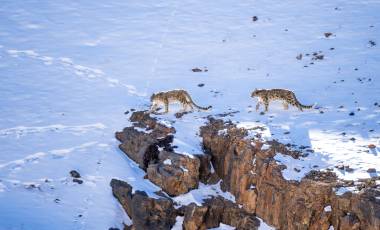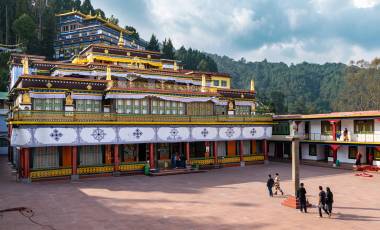- Survey the tallest mountain range in the world on a sensational flight over the Himalaya
- Travel in jeeps over the Khardung La, one of the highest motorable passes in the world
- Visit the Diskit Monastery, home to a colourful Buddha statue that’s taller than a house
- Meet rare double-humped Bactrian camels
- Cross the wild, glaciated Lasermo La pass
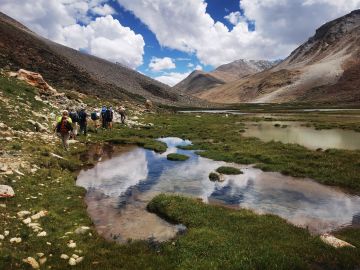
Ladakh: Nubra Valley Trek
- Home
- Asia
- India
- Walking & Trekking
- Point-to-Point
- Ladakh: Nubra Valley Trek
Start
Finish
Availability
Land Only Trip Price
Optional Single Supplement
Sunday Saturday
19 Jul 2026 18 Jul 2026
Sunday Sunday
02 Aug 2026 02 Aug 2026
Availability
Guaranteed (Available)
Land Only Trip Price CAD 5605 Book with CAD 1401 deposit Book with CAD 500 deposit
Optional Single Supplement +CAD 1055
Availability
This departure is available for new bookings and has reached the minimum number of passengers required to go ahead. Please click Continue to proceed with booking or contact our Sales team for assistance.
View Trip NotesSunday Saturday
02 Aug 2026 01 Aug 2026
Sunday Sunday
16 Aug 2026 16 Aug 2026
Availability
Guaranteed (Available)
Land Only Trip Price CAD 4655 Book with CAD 1163 deposit Book with CAD 500 deposit
Optional Single Supplement +CAD 1055
Availability
This departure is available for new bookings and has reached the minimum number of passengers required to go ahead. Please click Continue to proceed with booking or contact our Sales team for assistance.
View Trip NotesSunday Saturday
18 Jul 2027 17 Jul 2027
Sunday Sunday
01 Aug 2027 01 Aug 2027
Availability
Available
Land Only Trip Price CAD 6175 Book with CAD 1543 deposit Book with CAD 500 deposit
Optional Single Supplement +CAD 1102
Availability
This departure is available for new bookings, and will be guaranteed to go ahead once it reaches minimum numbers. Please click Continue to proceed with booking or contact our Sales team for assistance.
View Trip NotesSunday Saturday
01 Aug 2027 31 Jul 2027
Sunday Sunday
15 Aug 2027 15 Aug 2027
Availability
Available
Land Only Trip Price CAD 4845 Book with CAD 1211 deposit Book with CAD 500 deposit
Optional Single Supplement +CAD 1102
Availability
This departure is available for new bookings, and will be guaranteed to go ahead once it reaches minimum numbers. Please click Continue to proceed with booking or contact our Sales team for assistance.
View Trip NotesSunday Saturday
15 Aug 2027 14 Aug 2027
Sunday Sunday
29 Aug 2027 29 Aug 2027
Availability
Available
Land Only Trip Price CAD 4845 Book with CAD 1211 deposit Book with CAD 500 deposit
Optional Single Supplement +CAD 1102
Availability
This departure is available for new bookings, and will be guaranteed to go ahead once it reaches minimum numbers. Please click Continue to proceed with booking or contact our Sales team for assistance.
View Trip NotesExtend Your Trip
Golden Triangle Add-on Tour

A visit to the incredible Taj Mahal and other great Moghul cities close to Delhi is an excellent add-on to a visit to northern India.
The Taj Mahal in Agra was built by the Moghul emperor Shah Jahan in memory of his beloved wife, and is one of the most beautiful sights on earth. Close by is the imposing Red Fort of Akbar with its beautiful courtyards and palaces and let’s not forget the deserted royal city of Fatehpur Sikri. The extension also visits the pink city of Jaipur, capital of Rajasthan, which is one of the most attractive and colourful cities in India.
The detailed itinerary is here, or speak to your sales representative for more details.
Reviews
Add your own reviewEmbracing the wonder
This trip exceeded all my expectations. The stillness and solitude of the terrain. The beauty. The glacial ascent. My first time at altitude-and I loved it. Valerie, is a very wise, steady and trusted lead-a humble holder of stories and knowledge. And great food and guides too. And a wonderful group spirit. I could not have asked for more.
Most Inspirational Moment
The utter sense of being so small, feeling humbled by the terrain, and feeling very grateful to experience this.
Thoughts on Group Leader
Valerie was inspiring and very wise.
Advice for Potential Travellers
Go, you’ll not regret it.
From Valleys to Victory: My Unforgettable Nubra Trek!
My first high-altitude hike – the Nubra Valley trek – and all I can say is WOW! With Valerie Parkinson as our tour leader, we were set up for an unforgettable adventure from day one. The incredible cook, knowledgeable guides, and fantastic camp crew made every moment a joy. If you’re thinking of exploring the Nubra Valley, you simply can’t go wrong with this trip. The only challenge now? Deciding on my next adventure!
Most Inspirational Moment
Standing at the top of Lasermo La, surrounded by Himalayan peaks, I felt both humbled and exhilarated - proof that my first high-altitude trek was not only possible, but unforgettable. That moment of achievement, with the wind rushing past and the mountains stretching forever, will stay with me always.
Thoughts on Group Leader
Valerie was absolutely outstanding - her knowledge, passion, and calm leadership made the trek feel seamless and so special. She always had incredible stories to share, and her genuine care for the group turned this into more than just a hike; it became an unforgettable adventure.
Advice for Potential Travellers
Come with an open mind and a sense of adventure - the Nubra Valley trek is as much about connecting with the culture and people as it is about the mountains. Be prepared for high altitude, trust the crew (they’re amazing!), and don’t forget to slow down and enjoy every moment. It’s truly a once-in-a-lifetime experience.
You may also like
The Adventure Begins Here
Get regular inspiration straight to your inbox from Exodus’ experts.



